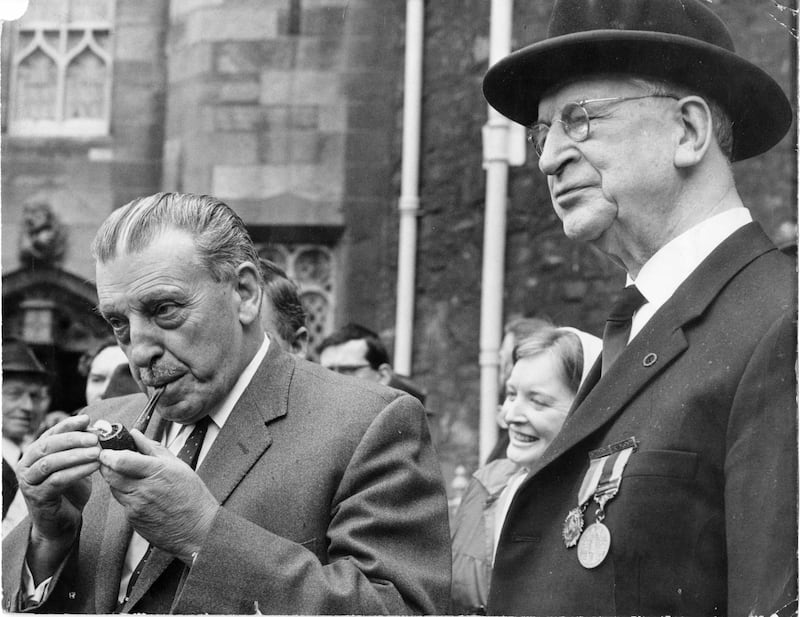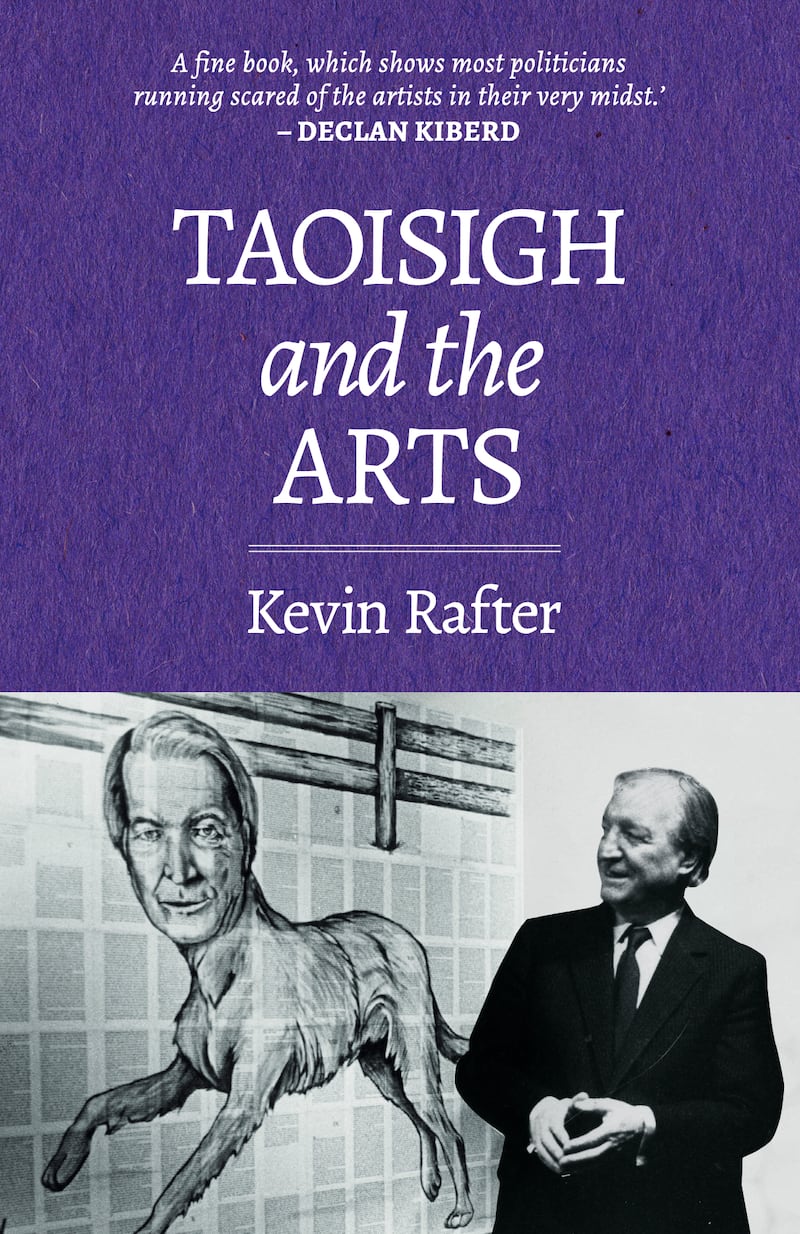In the summer of 1960, taoiseach Seán Lemass attacked “Irish journalists, playwrights and novelists” for sustaining “anti-Irish propaganda” through representations of “the stage-Irishman” in their work. “Even the BBC television service rarely, if ever, presents a play about Ireland without characters moving around in clouds of alcoholic vapour,” Lemass complained, before proceeding to cite international alcohol consumption rates to prove his case that the Irish were not a nation of drinkers.
Brendan Behan was one of Lemass’s main targets. Behan’s play The Hostage had opened to box-office success in Dublin in 1958 before transferring to London and New York. Set in Dublin, the play features an IRA veteran turned brothel-keeper and much “bawdy singing and dancing”. Behan, whose works had by this time achieved critical and commercial success internationally, did not take the taoiseach’s criticism lightly. The playwright and novelist reminded Lemass about the mass exodus of young people to Britain and beyond over the previous decade in search of employment. Behan drily observed that the taoiseach “must now be as expert on emigration as he is in dramatic criticism, so, marrying his dual talents, he may produce an answer to this question – why Irish playwrights leave home”.
Lemass’s concerns about the representation of Ireland abroad were shared in wider government circles. The recent declassification of official State papers includes reference to Behan’s contribution to a two-part CBS television documentary on Ireland, broadcast in the US in January 1961. A Department of Foreign Affairs memo referenced “a rambling and incoherent interview” with Behan, and the officials concluded that the programme reflected Ireland in very poor light, despite other interviewees, including Lemass and de Valera.

At the time of the leadership transition between de Valera and Lemass, the Arts Council was still finding its way but its options were severely limited by the low level of public funds available. The council warned the Fianna Fáil government in 1958 that it could not fulfil its objectives on an annual budget of £20,000; an increase of £20,000 was requested. In making the case for this money, the council drew comparison with the Arts Council in Northern Ireland, which, at that time, had a budget of £31,000 annum for a smaller area than the Republic. There were also imbalances in staffing: the Northern body employed 10 staff; its counterpart in Dublin had a part-time director, one secretary and one secretarial assistant, and occasionally employed an exhibitions officer on a fee basis. No increase in funding was forthcoming.
My friend of 14 years has retreated from my life – should I keep chasing them?
Oscars 2025: Who will win and who should win? Ireland has just one chance
Life without children: ‘I’d want the investment my mother had, but I don’t have it in me. I don’t have the grá for it’
Mark O’Connell: How ‘non-player character’ became a potent insult for the digital age
The parliamentary debate on the Arts Bill in 1951 had been the “first occasion since independence” that the Houses of the Oireachtas had discussed the arts – and arts policy – in Ireland. But the new organisation struggled to make a serious impact, primarily owing to its small budget. The Department of Finance’s view of the arts as “a non-essential service’ dominated”. The council’s annual reports in these years contain regular pleas for increased funding. In the council’s fourth annual report, Patrick Little wrote: “The limitation as to finance is keenly felt and it is suggested that a larger expenditure of public money on cultural developments constitutes an investment that will bring in a rich return, enhancing the national estate, attracting visitors and thus improving the valuable tourist traffic. This is done on an extensive scale in all European countries and adds to the education and dignity of a people.”

Having been appointed on a five-year term in December 1956, Seán O’Faoláin was already considering his position as director by late 1958. O’Faoláin was “gravely discouraged” at the budget available and wanted to concentrate full-time on his literary work, including taking up a role at Princeton University in New Jersey. His resignation took effect from July 1st, 1959. The 59-year-old writer suggested that the next director “should be a young and active man devoting all his time and energies to the work”.
With O’Faoláin’s departure, one of Lemass’s first tasks as taoiseach was to fill the vacant Arts Council position. His first choice was a 71-year-old Jesuit priest, Pádraig de Brun – a brother-in-law of Seán MacEntee, who had been a council member since 1952. De Brun, who published poetry in Irish, however, died shortly after his appointment as director. The taoiseach then opted for Fr Donal O’Sullivan, another member of the Jesuit community. The opinionated and dogmatic 55-year-old had been a council member for the previous four years.
Over a thirteen-year tenure as director, O’Sullivan, in tandem with his ally Michael Scott, a leading architect, who designed Busáras and Donnybrook Bus Garage in South Dublin, rigidly directed arts policy by reference to a personal preference for abstract visual painting, to the detriment of other painting schools and other art forms, including dance, drama and music. The priest had a fondness for whiskey; it was also believed that he had his own wine stock – the best French vintages – stored in a cellar at the Russell Hotel in Dublin, a favoured location for the “movers and shakers” of Dublin society in the 1960s. O’Sullivan was involved in a sexual relationship with Lady Catherine Walston, the American-born wife of one of Britain’s richest men and well-known politicians.
Taoisigh and the Arts by Kevin Rafter is published by Martello Books (€14.95)













